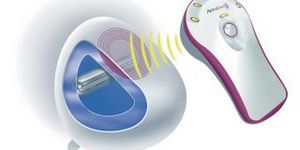World's Deepest Trenches Polluted to Extremes
The Mariana trench is one of the most remote places in the world. To get there one must travel 11 kilometers under the Pacific Ocean; it is the deepest known place on Earth.
However, very little is actually known about the trench, given its inaccessibility. Yet recently scientists have discovered extraordinarily high levels of pollution in small crustaceans that were captured by a marine robot. These creatures were found to be contaminated with 50 times more toxic chemicals called persistent organic pollutants (POPs) than crabs that survive in heavily polluted rivers in China, according to The Guardian.
Alan Jamieson of Newcastle University in the UK led the investigation, whose results were published in the journal Nature Ecology and Evolution. He says POPs accumulate in the fat of the amphipods that the team tested. When these animals are eaten by predators higher up the food chain, the toxins get passed up too, a phenomenon called bioaccumulation. Because POPs, such as polychlorinated biphenyls (PCBs), repel water and are able to attach to plastics, they can sink down to the deepest parts of the oceans.
There has also been previous research that PCBs and other POPs initially accumulate in the fatty tissue of larger animals, such as orcas and dolphins something. When these animals die, their contaminated carcasses fall to the depths of the ocean to be feasted on by smaller creatures, perpetuating the contamination cycle.
“We still think of the deep ocean as being this remote and pristine realm, safe from human impact, but our research shows that, sadly, this could not be further from the truth,” said Jamieson.“The fact that we found such extraordinary levels of these pollutants really brings home the long-term, devastating impact that mankind is having on the planet,” he said. "We're very good at taking an 'out of sight out of mind' approach when it comes to the deep ocean, but we can't afford to be complacent.”
PCBs in particular were produced on a grand scale from the 1930s to the 70s until they were banned due to their carcinogenicity. But between that time frame, the total global production of PCBs totalled roughly 1.3 million tons, according to Science Alert.
The research team found similar levels of toxins in the crustaceans sampled in the Kermadec Trench near New Zealand. Katherine Dafforn at the University of New South Wales in Australia explained: “The trenches [Mariana and Kermadec] are many miles away from any industrial source and suggests that the delivery of these pollutants occurs over long distances despite regulation since the 1970s.”
Photo: Soren Dreier
Jamieson says the research team will continue looking at the contamination levels in these animals; the next step will be to look at the levels of plastics in the amphipods, which are expected to have accumulated microbeads in their bodies.
If you're wondering what you can do to help curb this overwhelming pollution problem, take a look here to find some easy adjustments to your lifestyle that make a huge difference to the ocean.
Sources: ScienceAlert, The Guardian, Nature









